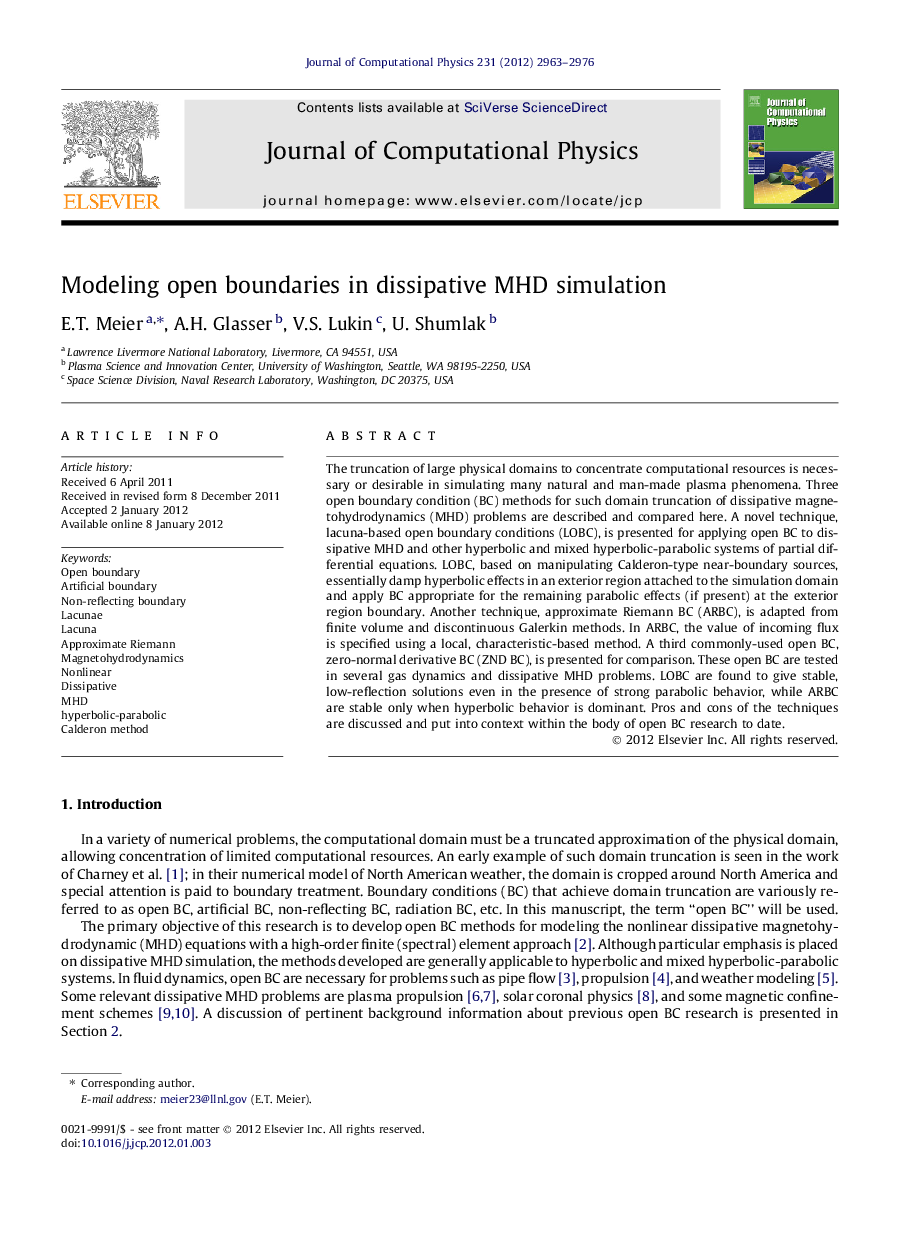| Article ID | Journal | Published Year | Pages | File Type |
|---|---|---|---|---|
| 10356374 | Journal of Computational Physics | 2012 | 14 Pages |
Abstract
The truncation of large physical domains to concentrate computational resources is necessary or desirable in simulating many natural and man-made plasma phenomena. Three open boundary condition (BC) methods for such domain truncation of dissipative magnetohydrodynamics (MHD) problems are described and compared here. A novel technique, lacuna-based open boundary conditions (LOBC), is presented for applying open BC to dissipative MHD and other hyperbolic and mixed hyperbolic-parabolic systems of partial differential equations. LOBC, based on manipulating Calderon-type near-boundary sources, essentially damp hyperbolic effects in an exterior region attached to the simulation domain and apply BC appropriate for the remaining parabolic effects (if present) at the exterior region boundary. Another technique, approximate Riemann BC (ARBC), is adapted from finite volume and discontinuous Galerkin methods. In ARBC, the value of incoming flux is specified using a local, characteristic-based method. A third commonly-used open BC, zero-normal derivative BC (ZND BC), is presented for comparison. These open BC are tested in several gas dynamics and dissipative MHD problems. LOBC are found to give stable, low-reflection solutions even in the presence of strong parabolic behavior, while ARBC are stable only when hyperbolic behavior is dominant. Pros and cons of the techniques are discussed and put into context within the body of open BC research to date.
Keywords
Related Topics
Physical Sciences and Engineering
Computer Science
Computer Science Applications
Authors
E.T. Meier, A.H. Glasser, V.S. Lukin, U. Shumlak,
